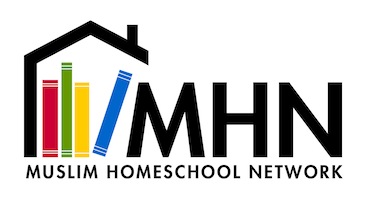How to choose good reading material -- a brief guide for the Muslim homeschooler
Part I-Non-Fiction
We all know that reading is immensely important to our children’s education. In this Information Age, however, we have such a wealth of material to choose from–both printed and online– that it can be difficult to narrow down our options and choose what is really beneficial. Since homeschooling parents have quite enough on their plates, this brief guide is intended to provide busy parents with a bit of direction when choosing reading material for their children.
As Muslim home educators, one of our chief priorities is instilling and promoting Islamic values. One of the best ways to do this is to read books and articles that address Islamic topics. The body of Islamic literature for children is growing and improving but still does not have the breadth and sophistication of non-Islamic literature. However, several MHN members have discovered some inspiring Islamic-themed books and have listed them in a Google document. The list, which all members are encouraged to use and contribute to, can be found here.
As with any written work, Islamic compositions are best comprehended when parents and children discuss them together. Parents can ask questions, catered to their child’s age and ability, to enable deeper comprehension and retention. Some thought-provoking questions might be:
-
What do you think the moral of this story (or the main point of this article) is?
-
(while stopping at a critical moment in the plot) What do you think will happen next in the story?
-
If you wrote a sequel to this story, what would it be about?
-
Which characters in this story display good Islamic manners? Which do not?
-
What would you do in this character’s situation?
-
Does this article relate to your life? Why or why not?
In addition to books, websites like www.suhaibwebb.com, www.muslimmatters.org, and www.islamicity.com have numerous well-written articles on Islamic topics. These pieces can be a great starting point for lessons and discussions about the deen. Of course, some articles on these sites are geared more towards adult readers, so parents are advised to pick and choose which items they want their child to read, rather than directing the child blindly to the website.
In addition to Islamic literature, non-fiction will be an obvious educational choice for Muslim homeschoolers. If a child is not yet a proficient or enthusiastic reader, it will be particularly important to choose books and articles that are age-appropriate and interesting. Nothing is more discouraging to a student than trying to slog through a book that is too difficult or boring. If the child is supposed to be studying a topic independently as much as possible, then reading a book at or below her reading level is best. If a parent has the time to read aloud, answer questions, and assist the child with her studies, then a more difficult book would be suitable.
If a student shows interest in a topic but then is forced to read a complex description that is above his level without any parental guidance, he will likely lose his spunk and momentum. On the other hand, subjects like science, history, and even mathematics will be enhanced and enlivened by appropriate, well-written non-fiction works. If a child shows a passion for polar bears, the Civil Rights Movement, the Theory of Relativity, rainforests, tessellations, or nearly anything else, the local library will have a wide variety of books on these topics. Books that are not available on the shelves can be ordered from other libraries, often for free or for a minimal fee. The library is, in fact, a homeschooler’s best friend, offering nearly limitless, free materials allowing parents the opportunity to use a variety of books and resources to teach a topic. For instance, we can teach history through biographies, historical fiction, primary sources, and shorter, specialized books rather than one all-encompassing (and less thorough) history textbook.
It is not wise for a scholar to rely on one or two books, particularly if the topic is complex. Remember, even non-fiction books are written from an author’s point of view and may contain hidden biases, leave out information, or even endorse untruths. To raise our children to be critical thinkers, it is important to teach them to analyze and question what they read, and to seek out various points of view. In the study of history, in particular, there will often be many different versions of “the truth.” What seems like fact to the conquering nation, for instance, will be disputed by the conquered people, who had vastly different experiences. So which version of any historical event is the “truth?” Let your kids read all points of view and decide for themselves, rather than relying on the author of a history book.
Magazines geared toward young readers can also be a fun and educational source of non-fiction reading material. Ranger Rick magazine, published by the National Wildlife Federation, appeals to animal lovers, and there are two different levels for younger and older readers. American Girl Magazine contains many wholesome and educational pieces for preteen girls. Kids Discover magazine, which I have not read, looks promising as it explores nature, science, geography and history in an ad-free format. All of these magazines can be perused at the local library before making an investment in a subscription. Finally, Saudi Aramco Young Reader’s World is a free, online source for various interesting topics that relate to the Arabic-speaking and Islamic world.
I hope that this advice about non-fiction will be useful to fellow homeschoolers. In my next blog, insha’Allah, I will address fiction and whether or not that genre has an important role in a child’s education.
comments powered by Disqus